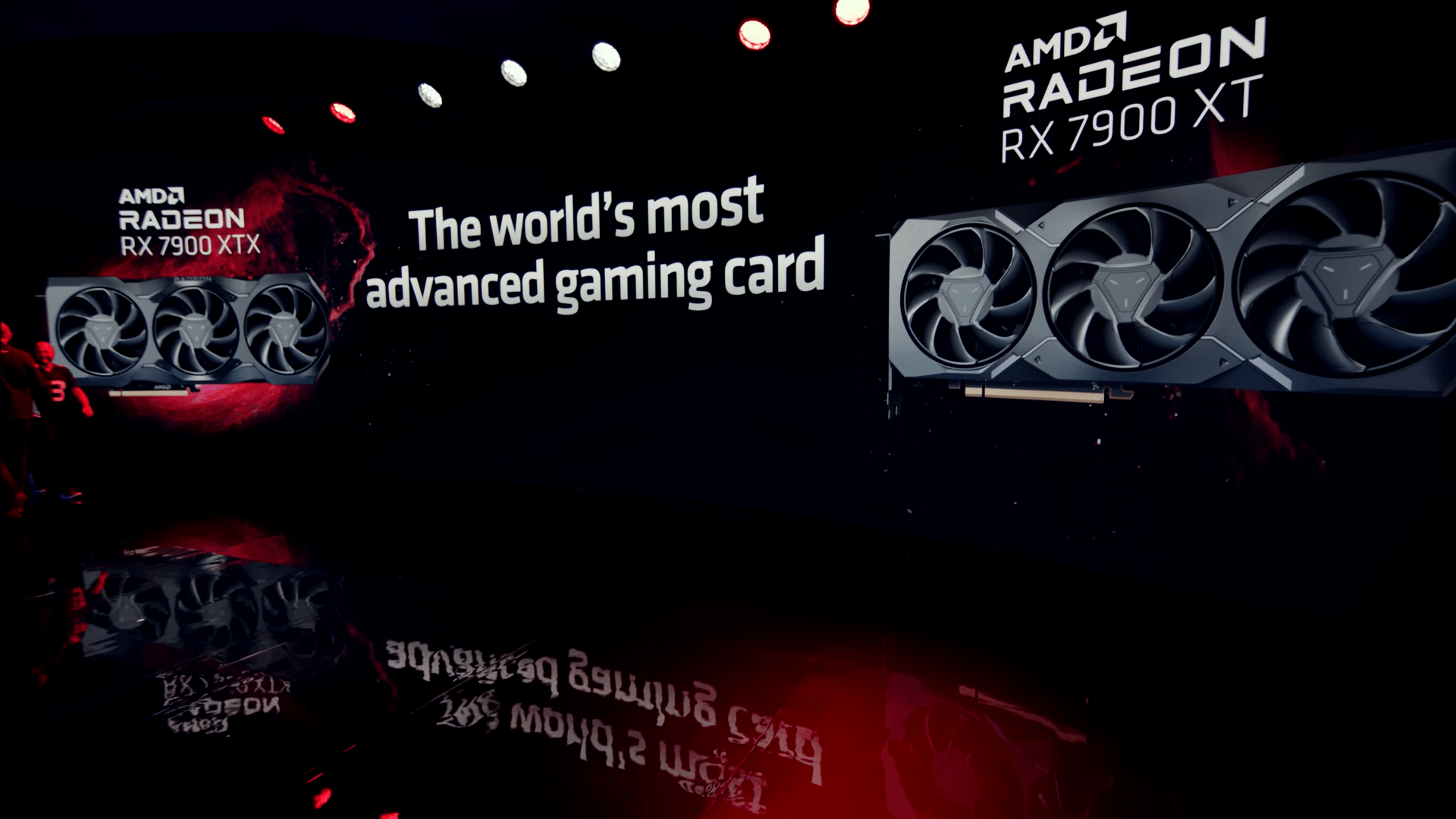Great news for gamers! AMD has finally announced the official release date of its latest GPUs. The tech giant unveiled brand new Radeon RX 7900 XT and RX 7900 XTX GPUs on Friday.
Radeon RX 7900 XT and RX 7900 XTX will utilize AMD’s rDNA 3 architecture. AMD has priced its new cards quite competitively this time. The Radeon RX 7900 XT will be available for $899, and the more powerful RX 7900 XTX will retail for $999.
For comparison, the RTX 4080 from Nvidia starts from $1199, and the RTX 4090 costs a staggering $1599.

The new RDNA 3 architecture uses a chiplet-style design where the GPU is split into different sections, similar to the Ryzen processors.
The RX 7900 XTX is AMD’s most advanced GPU yet. According to AMD, the 7900 XTX is 1.7 times more powerful in 4K gaming than its RDNA 2-based flagship, RX 6950 XT. The flagship GPU features 96 compute units clocked at 2.3 GHz and 24GB GDDR6 memory with a fast 384-bit bus.
The 7900XT, on the other hand, is a bit less powerful. It has 84 compute units clocked at 2GHZ and 20 GB GDDR6 memory with a relatively slower 320-bit bus.
AMD decided to go for GDDR6 video memory instead of GDDR6X to save power and improve efficiency. The board power for RX 7900 XTX and RX 7900 XT is 350 watts and 300 watts, respectively. AMD’s decision to go with efficient memory is understandable.
Recently, many RTX 4090 users reported meltdown of their power adapters. Experts suspect that high power consumption and thermals are the main reason behind it. AMD most probably learned from its competitor and settled for more efficient GDDR6 memory.
Unlike RTX 4090’s new 12VHPWR connectors, the RX 7900 XT and 7900 XTX will use two standard 8-pin connectors for power delivery.
AMD promises a giant generational leap with the new RDNA 3 architecture. The company claims gamers will see up to 54% more performance per watt than the old RDNA 2 architecture. Moreover, AMD says RDNA 3 will be capable of calculating 61 TFLOPs of data compared to 23 TFLOPs of RDNA 2 flagship.
Along with the new GPUs, AMD announced the latest FidelityFX Super Resolution (FSR) version. The new FSR 3.0 claims to compete directly with Nvidia’s DLSS 3. In AMD’s words, FSR 3.0 will use “Fluid Motion Frames technology” to provide twice the performance uplift over FSR 2.0 at 4K resolution.
AMD certainly has the upper hand over Nvidia regarding display connection. Both RX 7900 XT and 7900 XTX will ship with DisplayPort 2.1 connection. Meanwhile, Nvidia’s 40 series GPU comes with DisplayPort 1.4 and 1.4a standards.
Displayport 2.1 can support 4K at 480HZ and 8K at 165HZ, whereas DisplayPort 1.4 and 1.4a are limited to only 4K at 120HZ.
The cost-to-price ratio of the 7000 series AMD GPU is insanely good. With Nvidia facing harsh criticism from gamers, the launch time for the new AMD GPUs couldn’t have been more perfect.
If AMD can deliver what it promised, it may dominate the graphics card market next year. The latest AMD GPUs are set to launch on December 13th.
